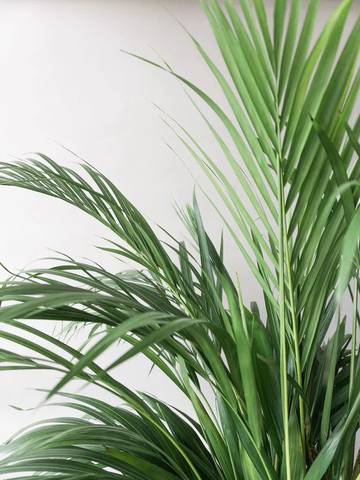
Butterfly Palm
Butterfly Palm Care Guide
Light
Butterfly Palm prefers bright, indirect light. It can tolerate some shade but avoid placing it in direct sunlight as this can scorch its fronds. A north or east-facing window is ideal. If placed near a south or west-facing window, ensure it is shielded by a sheer curtain to filter the intense sunlight.
Water
Keep the soil consistently moist but not waterlogged. Overwatering can lead to root rot, while underwatering can cause the tips of the leaves to turn brown. Water when the top inch of the soil feels dry to the touch. Use room temperature water to avoid shocking the plant. Ensure that the pot has drainage holes to allow excess water to escape.
Humidity
Butterfly Palm thrives in high humidity environments. Aim for a humidity level of at least 50%. You can maintain humidity by placing the plant on a tray filled with pebbles and water or by using a humidifier. Mist the plant occasionally, especially during dry winter months.
Temperature
The ideal temperature range for Butterfly Palm is between 65-85°F (18-29°C) during the day.
Avoid exposing the plant to temperatures below 55°F (13°C) as it is sensitive to cold drafts.
Fertilizer
Use a balanced liquid fertilizer diluted to half strength during the growing season (spring and summer). Apply fertilizer once a month. Avoid fertilizing during the dormant season (fall and winter) as the plant's growth slows down.
Toxicity
Butterfly Palm is non-toxic to pets and humans, making it a safe choice for households with pets and children.
Additional Care Information
Repot the Butterfly Palm every 1-2 years using a well-draining potting mix.
Prune any yellow or brown fronds to maintain the plant's appearance and health.
Butterfly Palm is relatively pest-resistant, but occasional pests like spider mites or mealybugs can be treated with neem oil or insecticidal soap.
Troubleshooting
Brown tips on leaves: This is often due to low humidity or inconsistent watering. Increase humidity levels and check the soil moisture regularly.
Yellowing or drooping fronds: This can indicate both overwatering and underwatering. Adjust your watering schedule accordingly.
Pest infestations: While Butterfly Palm is generally resistant to pests, occasional infestations can occur. Treat with neem oil or insecticidal soap to control the pests.
Slow growth: Ensure the plant is receiving adequate light, water, and fertilizer. If growth remains slow, consider repotting the plant or checking for root-bound conditions.











